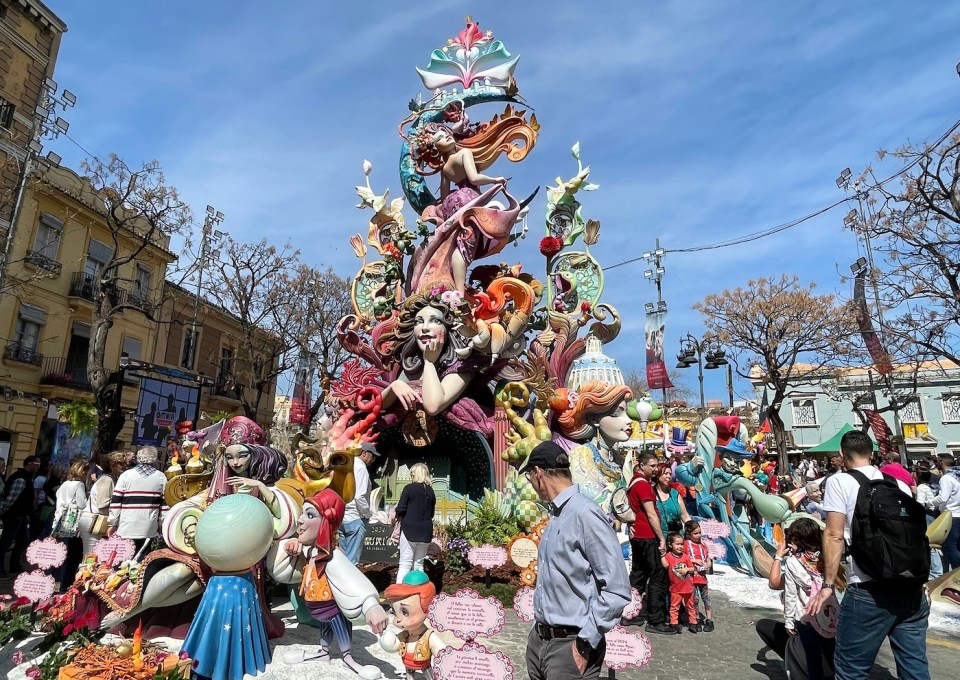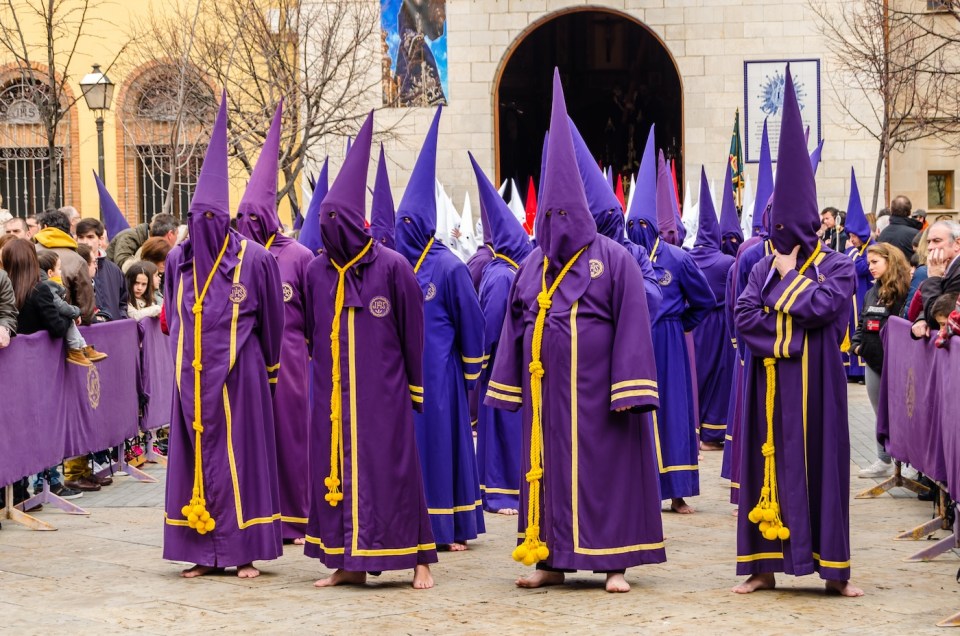A country with a cultural tapestry unlike any other, Spain’s towns and cities come alive throughout the year with celebrations and traditional festivals. With some festivals more unique than others, each festivity showcases the people of Spain’s zest for life and the importance the nation places on the continuation of tradition.
Many are rooted in historically religious origins, dating back hundreds of years, whereas others are more modern displays of artistic wonders. Due to Spain’s staunch regional identities, festivals vary across the nation, from flamenco in the southern region of Andalucía to Sant Jordi (St George’s Day) in Barcelona.
The following four festivals are some of the most popular and most visited throughout the year and would make a great addition to any trip to Spain.
Traditional Spanish Holy Week (Semana Santa) procession on Holy Friday in the streets of Palencia (Castilla y Leon), Spain
Photo by depositphotos.com
Semana Santa
Due to the country’s predominantly Roman Catholic affiliations, Easter is one of the most important religious celebrations in the Spanish calendar. Celebrated throughout the Holy Week (Semana Santa), each town and city has their own processions taking place each day with unique customs.
Many claim the best region to see the daily processions is Andalucía, particularly Málaga and Seville. As members of the brotherhoods bear the weight of gigantic religious statues, on-lookers will hear drums and music fill the streets as they make their way along set routes.
Experience the extraordinary nature of Semana Santa by hiring a villa in Spain for a week. Each day focuses on a different aspect of the Easter celebration, so the chance to see the week in full is not one to be missed.

Photo by Flickr
Las Fallas
The east-coast city of Valencia is home to Las Fallas, an artistic and satirical festival held every March. Tall monuments made of wood and papier mâché can be found throughout the entire city, many satirically depicting figures in the media, and some just produced purely as works of art.
With competitions held for winning Fallas, visitors can expect to see astonishing artistic displays. Perhaps the unexpected element of the festival is the cremà: the final act of the celebrations. The hundreds of monuments are lit up in flames in spectacular bonfires across the city, to resemble the traditional burning of wood for the arrival of…
Click Here to Read the Full Original Article at Unusual Places…
